Infrared saunas offer most of the same health benefits as traditional saunas, and some (depending on their technology) can also provide unique skin health benefits.
In this article, I’ll explain what to look for depending on factors like your space, budget and intended use cases (e.g., relaxation, recovery, etc.).
I should note that I’ve tested and own multiple infrared saunas, including a walk-in infrared sauna, a portable one-person infrared sauna, and even an infrared sauna blanket. This article is based on a combination of the research I’ve conducted over the years as well as my first-hand experience with these devices.
I’ve also written an in-depth article on infrared sauna health benefits (which goes into more detail about exactly how these saunas work), as well as a roundup of the best infrared saunas based on my testing.
Infrared Sauna Buying Guide
Here’s a quick overview of the most important things to keep in mind when buying an infrared sauna.
- Heaters with high emissivity (95% or more) are essential for getting the maximum possible benefits from infrared radiation, because they ensure that enough of the infrared rays (photons) get into your tissue. The more energy those photons dump into your tissue, the more benefits you can expect.
- Most of the infrared saunas on the market emit only far-infrared rays. While this is sufficient for muscle recovery, immune system support and general wellness, you’ll want to look for a full-spectrum infrared sauna if you’re interested in improving your skin health. This is because the shorter wavelengths of near-infrared and mid-infrared radiation are particularly beneficial for improving collagen production and blood flow in the skin.
- Many lower-end infrared saunas off-gas volatile organic compounds (VOCs), and/or emit unhealthy levels of electromagnetic fields (EMFs). Ask for test reports if in doubt. For reference, there should be only trace levels of VOCs (if any), and EMF levels should be below 1.0 mG (and ideally, below 0.5 mG).
- Infrared sauna blankets are inexpensive and convenient, but they don’t offer the same health benefits as infrared saunas with LED heating panels.
- If you’re on a budget, a far-infrared sauna with high-emissivity panels offers the best bang for your buck, as the price point will be significantly lower than a full-spectrum model while providing most of the same benefits.
With that in mind, let’s take a deeper dive into these and a few other key factors that are important to consider.
#1. Cost
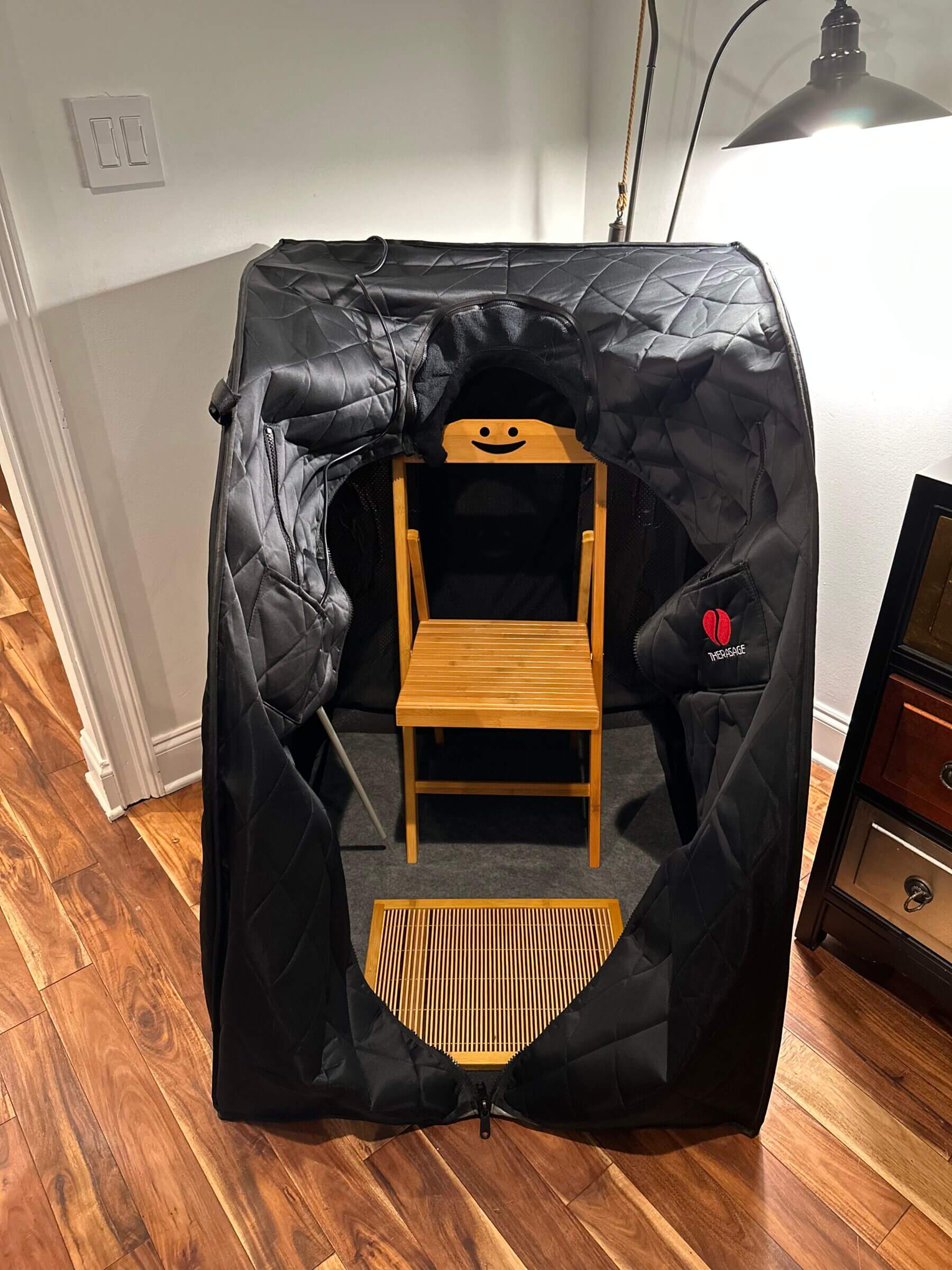
The price of infrared saunas ranges from a few hundred dollars for an infrared sauna blanket to $10,000 or more for a high-quality, full-spectrum walk-in sauna cabin.
After deciding what size infrared sauna you want (see the next section for more on this), I recommend prioritizing high-emissivity heaters and non-toxic materials over features such as wireless connectivity, touchscreens and other nice-to-have upgrades that won’t improve the sauna’s effectiveness.
For example, if you’re looking for an infrared sauna cabin that offers enough space for two people, I’d go with high-quality far-infrared sauna with manual temperature controls (e.g., the Sunlighten Signature) rather than an imported full-spectrum infrared sauna that has all the bells and whistles but is equipped with low-emissivity heaters and which off-gasses VOCs.
As with most products, you get what you pay for with infrared saunas. Low-cost cabins made in China cost much less than those manufactured in the United States, but they come with low-quality heaters, cheap wood, and are often made with materials that emit VOCs and/or EMFs.
#2. Size and Space Requirements
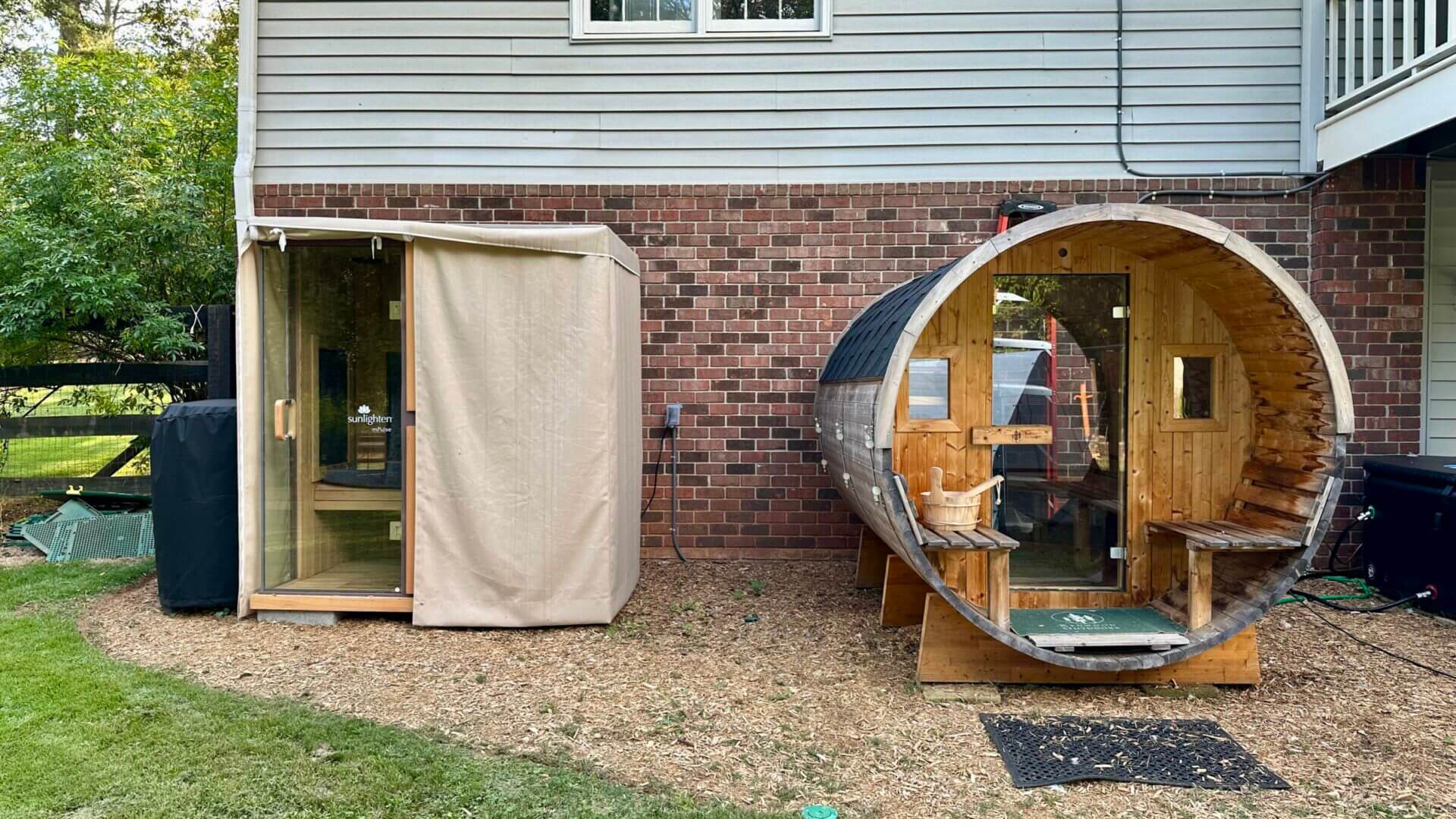
Infrared saunas come in many forms, including infrared sauna blankets that don’t require any permanent space, personal saunas with a minimal footprint, and large walk-in sauna cabins that you can enjoy with friends and family.
Walk-in infrared sauna cabins offer the best overall experience, but if you don’t have the budget, or if you plan on always using the sauna solo, a personal sauna (like the Theresage 360) offers most (if not all) of the same benefits at a much lower price.
If you have very little space, infrared sauna blankets offer fewer benefits but can be easily stored under a bed or in a closet (and they cost half or less than the cheapest personal sauna).
We own several sizes of infrared sauna products, and find that they each have their own use cases:
- Our kids love the sauna blanket we have and use it often during the colder months of the year (especially when they feel like they might be coming down with something).
- Any time we have family over, they use our Therasage personal sauna because it’s in the corner of our family room, and we can still chat and engage.
- My wife and I love using our Sunlighten walk-in sauna together because it offers us a chance to relax and catch up.
In other words, the right size of sauna for you depends not just on your available space, but also who intends to use the sauna, and how they intend to use it.
High-quality infrared saunas usually don’t have any vaporous or gaseous emissions, so you don’t need to worry about providing an exhaust or additional ventilation. Additionally, there is usually no need to provide extra room around the sauna for airflow, even though leaving an inch or two won’t hurt. All the Sunlighten saunas we’ve had at our home spa came with a vent on the ceiling, so I recommend leaving a few inches of room above the top of the sauna for hot air to escape.
Besides the exterior size of the sauna, you also want to make sure the sauna you choose has enough room in the interior. Some two-person saunas are like two-car garages — technically big enough for two people, but without enough space to fit two adults comfortably next to each other (especially if one or both of those persons are on the bigger side).
When we purchased our first two-person Sunlighten mPulse, I was afraid my wife and I wouldn’t fit comfortably next to each other. I’m six feet tall with fairly broad shoulders, but my wife is petite and we had no issues whatsoever.
Even when I used our sauna with my buddy who is 6’ 6” there was no problem. However, I always recommend asking for the interior dimensions before placing an order and making sure there are no awkward walls, cup holders or other things that could reduce the usable space.
If in doubt, and space and budget permitting, go a size bigger than you think you need. We recently upgraded our Sunlighten mPulse Believe to the larger Sunlighten mPulse Conquer (which offers room for three adults), and I’m happy to have the extra space to stretch out.
#3. Electrical Requirements
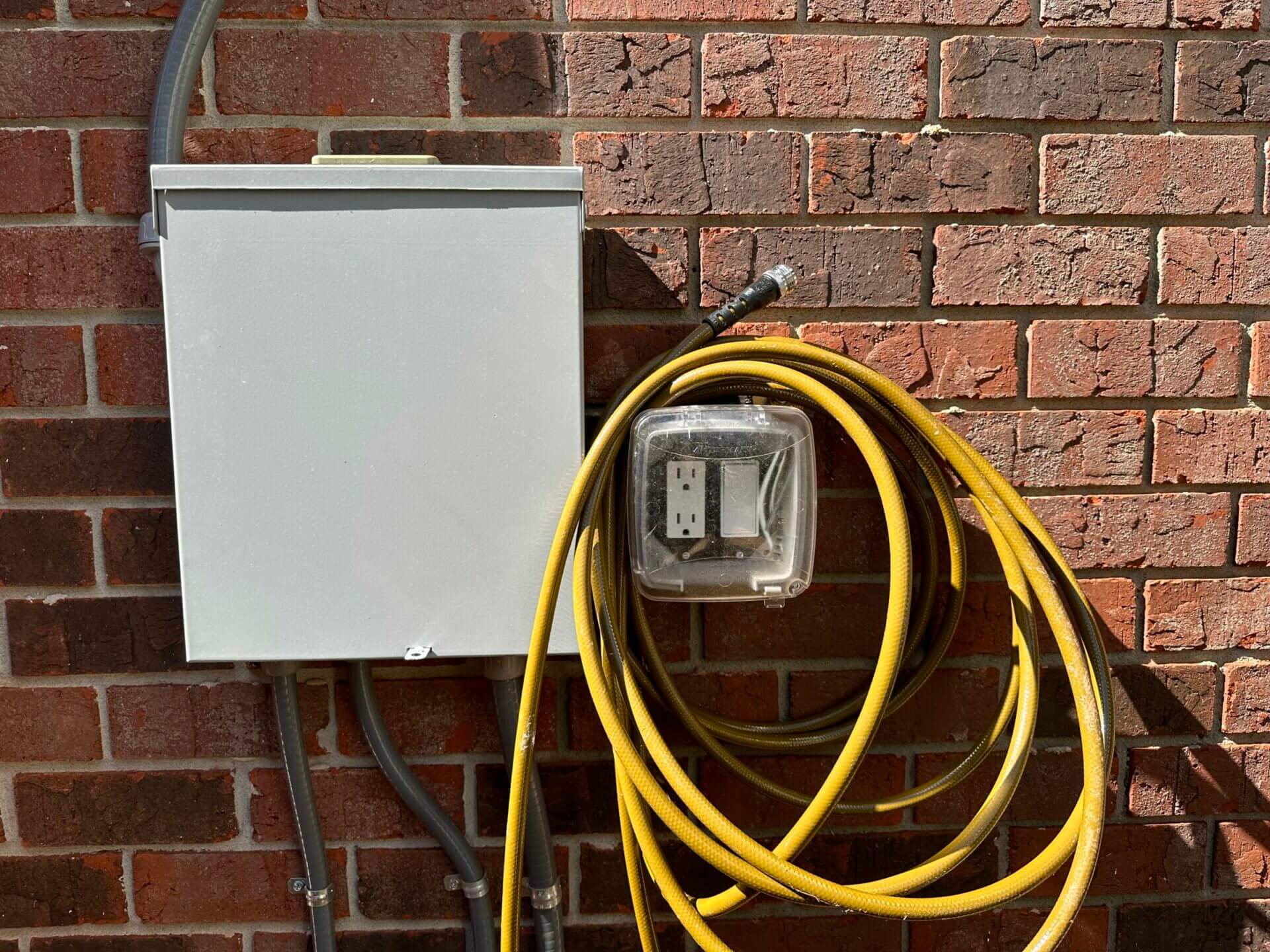
As a rule of thumb, you can plug most infrared sauna blankets and personal infrared saunas into a standard 120V 10 amp wall outlet.
However, larger infrared sauna cabins sometimes require a dedicated 120V 20 amp circuit. And some of the more powerful full-spectrum infrared saunas, such as the Sunlighten mPulse Smart Sauna, require a 240V 20 amp circuit to operate.
Most homes in the United States are only equipped with 120V 10-15 amp outlets. The only appliances that usually require 240V circuits are electrical stoves or ovens and HVAC units. So if you opt for something like the mPulse, you’ll most likely need to hire an electrician to add a dedicated 240V 20 amp outlet that provides enough juice to power the sauna.
When we purchased our first full-spectrum infrared sauna, we had to install a dedicated 120V 20 amp circuit that cost us $850. A few months later, we installed a traditional wet sauna that required a 240V 50 amp circuit due to its fairly powerful 9kW heater, setting us back $4,500 because we also had to install a new breaker box to meet local building codes.
Half a year later, we replaced our infrared sauna with a newer model that required a 240V 20 amp circuit. Fortunately, we were able to hook into the breaker box we installed for the wet sauna to avoid more expensive electrical work.
The point is that there is a good chance you’ll need an electrician to run an extra circuit (breaker and wire) from your breaker box to where you want to install the sauna. Depending on whether you have empty slots in your breaker box and the distance between your breaker box and your spa location, the work and materials involved may run somewhere from a few hundred to several thousand dollars.
So, I recommend checking the electrical requirements of the sauna before making a purchase to ensure you can accommodate them. Plus, you have to make room in your budget if you have to install a new electrical circuit.
#4. Build Materials and Design
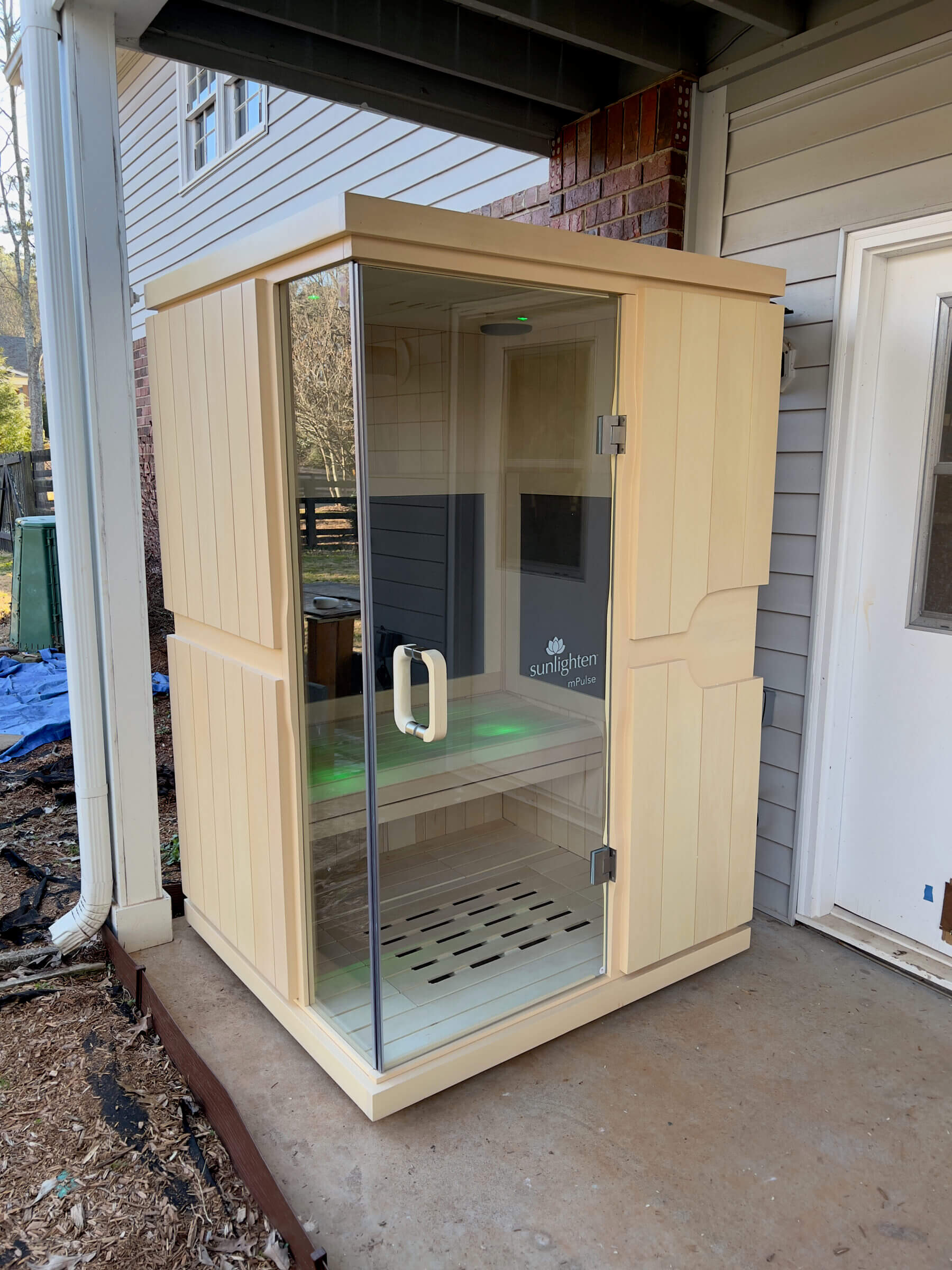
Walk-in infrared saunas come in a range of wood types. The most common are aspen, basswood, birch, eucalyptus, hemlock and red cedar.
Aside from personal preference, the most critical factor when choosing the type of wood is whether you plan on installing your sauna indoors or outdoors.
Certain woods — notably, red cedar — are more resistant to rot and decay than others. In fact, I recommend sticking to red cedar if you plan on using your sauna outdoors.
For indoor use, you can base your wood selection on your budget and personal preferences.
The first full-spectrum infrared sauna we purchased for our outdoor home spa (the Sunlighten mPulse Believe) was made out of basswood, and we only found out after setting it up that we had picked the wrong type of wood.
Fortunately, Sunlighten offered a water-proof cover we could use to protect the wood and prevent immediate damage until we upgraded to a cedar/eucalyptus cabin a year later.
As far as the design is concerned, most infrared sauna cabins follow a relatively basic box design with a glass door to get in and out.
#5. Type and Placement of Heaters
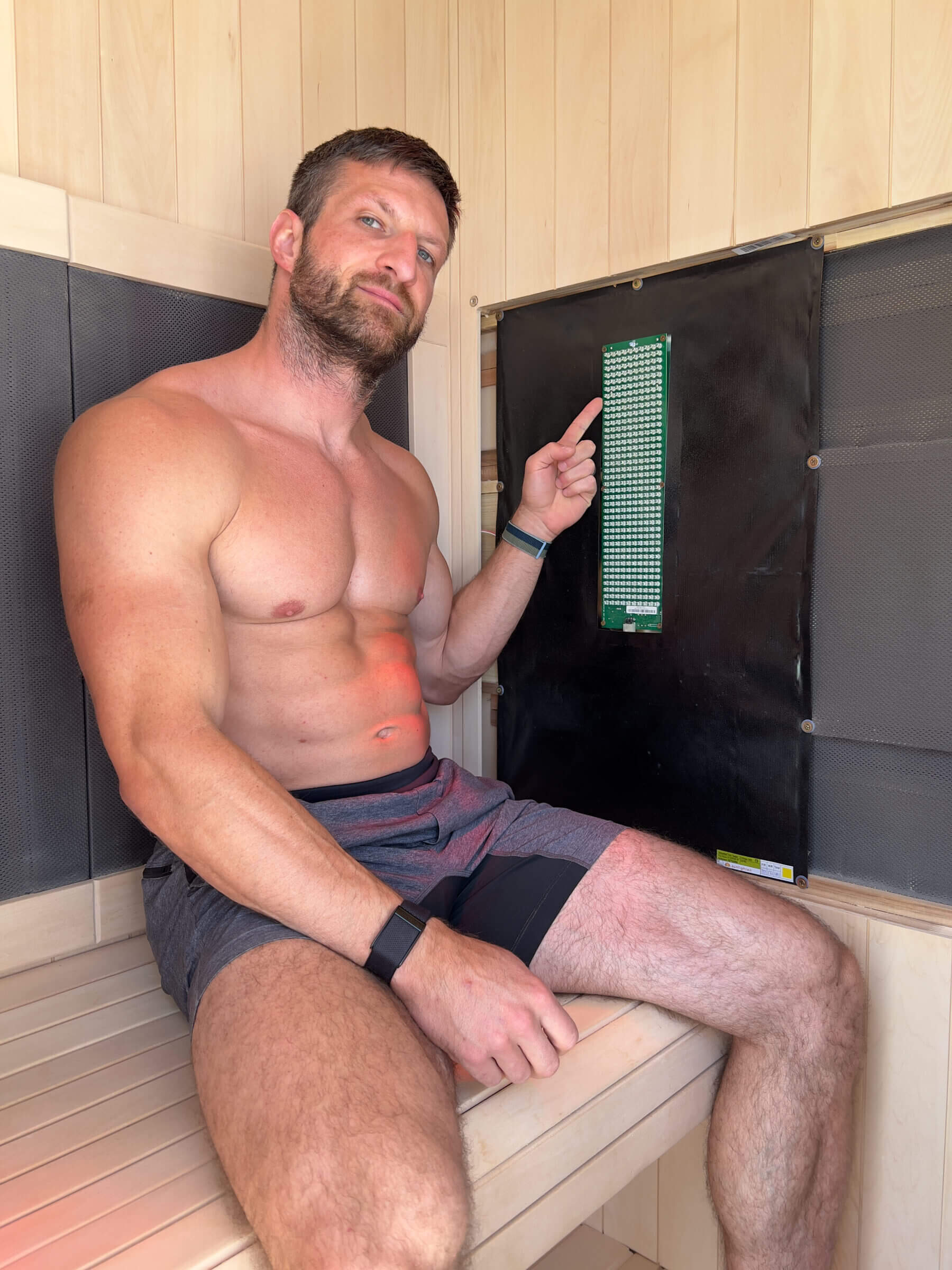
The heaters are arguably the most important part of any infrared sauna, and their quality determines the health benefits you can get from the device.
The two most common types of materials used in infrared sauna heaters are carbon and ceramic. Carbon heaters offer a more even heat distribution across the surface of the heater to avoid “hot spots.” They also operate at a lower surface temperature, and they’re relatively flexible and thin (which improves their versatility).
On the other hand, ceramic heaters emit infrared heat at higher temperatures. They’re incredibly durable, and they heat up faster.
Some infrared sauna manufacturers also use halogen or tungsten bulbs to increase the temperature and reduce the time it takes to heat up the sauna.
Aside from the type of heaters used, it’s also important to consider their placement within the sauna. I prefer infrared saunas that have heaters on all sides, including the floor, to provide optimal coverage regardless of where I sit.
#6. Light Spectrum
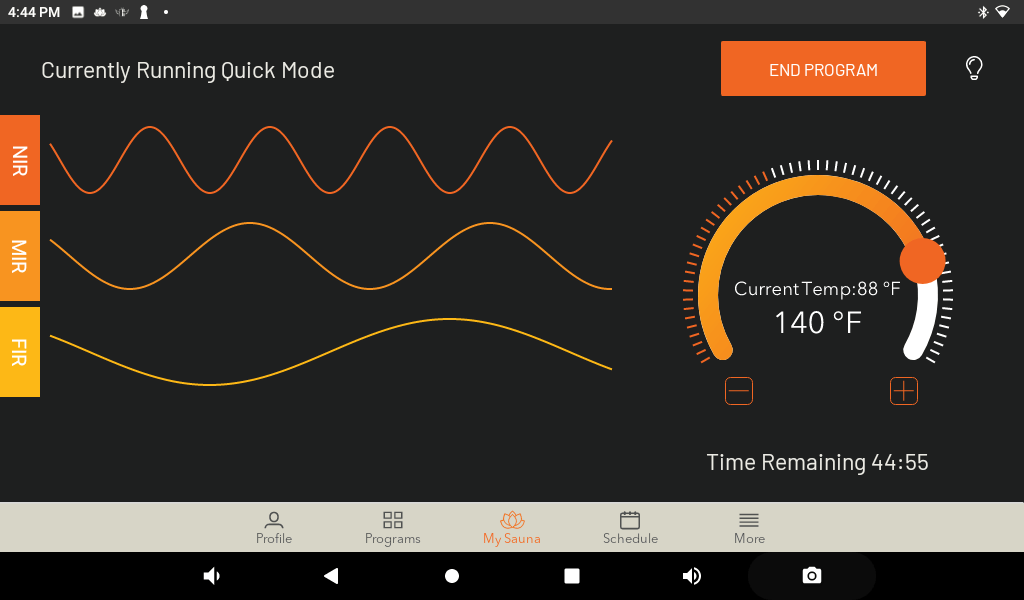
The infrared light spectrum can be divided into far-infrared, mid-infrared, and near-infrared light. Most infrared saunas on the market, especially lower-priced models, feature only far-infrared wavelengths.
The longer wavelength of far-infrared light penetrates tissue deeper, which is great for improving blood flow, speeding up your heart rate and causing heat stress (one of the factors that helps improve your immune function).
However, mid-infrared and near-infrared light offers distinct health benefits that may be important to you, including improved collagen production in the skin and pain relief.
If either of those outcomes are part of your motivation for buying an infrared sauna, I recommend looking for a model that covers the entire infrared light spectrum for maximum benefits.
We have the Sunlighten mPulse and absolutely love it. It features not only full-spectrum infrared heaters with a high emissivity but also red light therapy for additional benefits.
Two other good options are the Sunlighten Amplify (which features a combination of far and full-spectrum heaters) or the Sun Home Saunas Equinox.
Additionally, some sauna manufacturers include visible red light in conjunction with full-spectrum infrared light to further bolster the benefits. If you’re interested in the specifics, you can read my article about the benefits of combining red and infrared light in saunas. But in a nutshell, adding red light to an infrared sauna can:
- Help lower inflammation.
- Improve the quality of your sleep.
- Support your body’s natural detoxification pathways.
- Support eye health.
- Improve hair growth.
- Improve cellular function, leading to improved recovery, better athletic performance and optimized metabolism.
- Reduce muscle fatigue and pain.
- Boost skin rejuvenation.
The two infrared sauna cabins we currently have at home (the Sunlighten mPulse smart sauna and the Therasage 360 personal sauna) combine red and full-spectrum infrared light.
Of course, full-spectrum infrared saunas are usually more expensive than their far-infrared counterparts, and you have to decide whether the benefits of the near-infrared and mid-infrared rays are worth the extra money.
#7. Emissivity
I firmly believe that emissivity — which is the amount of energy the heaters can deliver into your tissue — is more important than the type of material used for the heaters.
A heather’s emissivity depends on its material composition (e.g., metals generally have low emissivity, whereas non-metals such as ceramic and carbon have high emissivity), panel thickness, surface finishes and coatings.
Since most infrared saunas on the market rely on either carbon or ceramic (two naturally highly-emissive materials), the main difference between low-end and high-end heaters is their coating and manufacturing process.
For example, Sunlighten uses a patented SoloCarbon coating for its heaters to achieve emissivity levels of 95-99%.
High emissivity levels are important to ensure that high concentrations of peak infrared waves (not just heat) penetrate your tissue to deliver all the benefits you expect from your infrared sauna. Low-emissivity heaters deliver less energy (in the form of photons) into your tissue, leading to fewer or less pronounced health benefits.
Premium infrared saunas, like the ones from Sunlighten and Sun Home Saunas, offer heaters with high emissivity of 95% or more. Conversely, lower-cost options, like those available at Costco, often include heaters with a much lower emissivity of 86% or less.
Budget permitting, I recommend opting for a sauna with a high emissivity rating.
#8. Electromagnetic Fields (EMFs) and Electromagnetic Radiation (EMR)
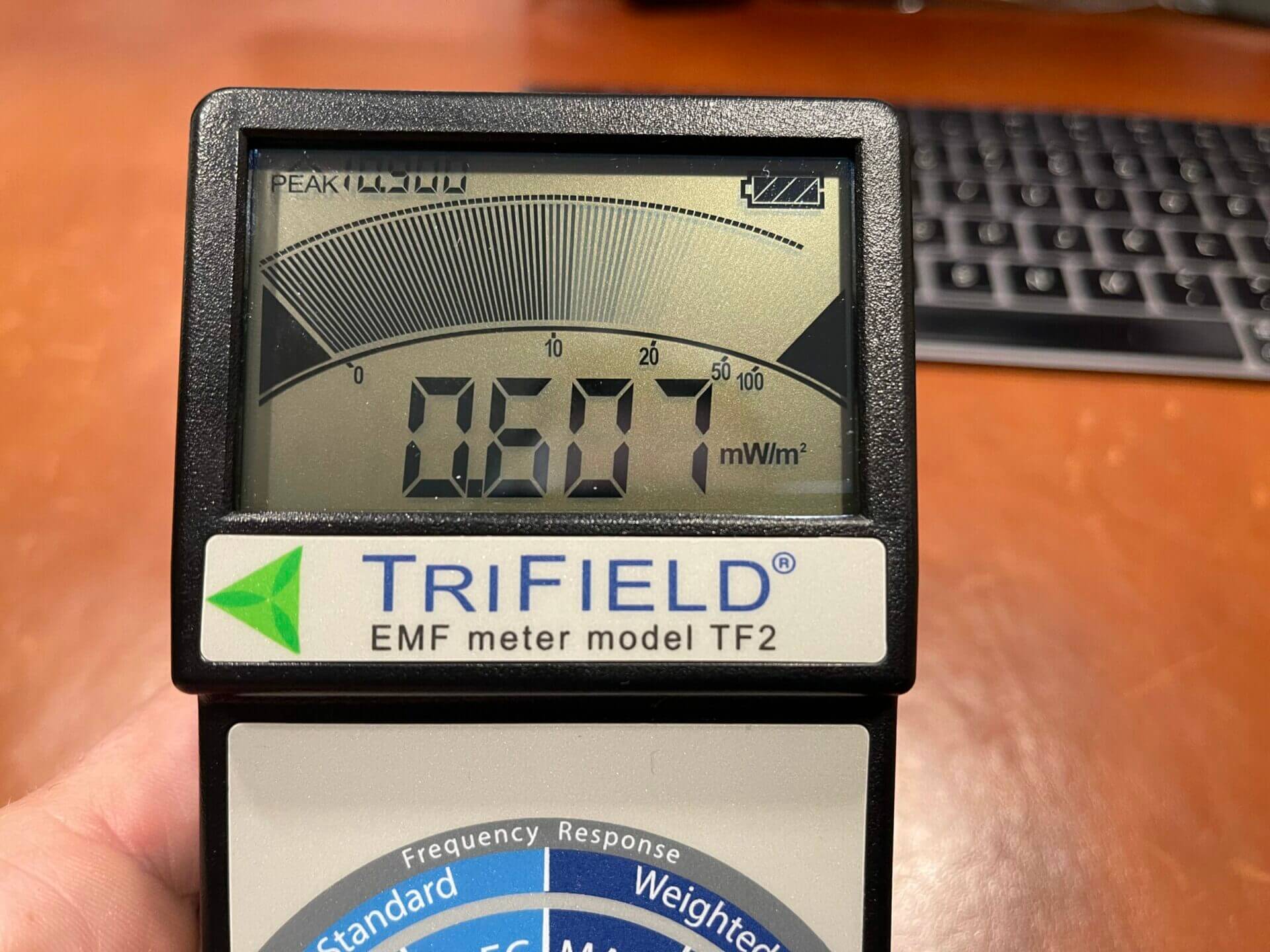
As I discussed in my blog post about the potential dangers of EMFs, even non-ionizing radiation emitted by household appliances, cell phones, WiFi routers and the heaters of an infrared sauna can negatively impact your health in the long term.
That’s why I recommend asking for EMF test reports when shopping for an infrared sauna and choosing one with low EMF levels. Most premium sauna companies offer EMF test reports on their web pages or upon request (e.g., this one from Sunlighten) .
Similar to environmental toxins, the lower your exposure levels, the better it is. In the context of infrared saunas, I recommend looking for products that emit 1 mG or less of magnetic radiation. For reference, the Sunlighten sauna we have at our home spa emits 0.5 mG or less.
#9. Presence of Volatile Organic Compounds (VOCs)
Some of the cheaper infrared saunas on the market (especially models imported from China) are notorious for using toxic glues, stains or coatings that off-gas VOCs, including carcinogens and/or endocrine-disrupting chemicals, known as xenoestrogens. Examples of such chemicals include airborne metals, sulfur dioxide or carbon black.
That’s why I highly recommend opting for saunas that aren’t made with materials (e.g., toxic adhesives, glues or fabrics) that are likely to off-gas.
One of the best strategies to avoid exposing yourself to VOCs is to pick saunas made from natural materials (e.g., cedar, birch, basswood) that don’t require coatings or stains. If in doubt, ask for test reports to make sure VOCs are only present in trace amounts or not at all.
Here’s an example of a test report from Sunlighten.
#10. Optional Features
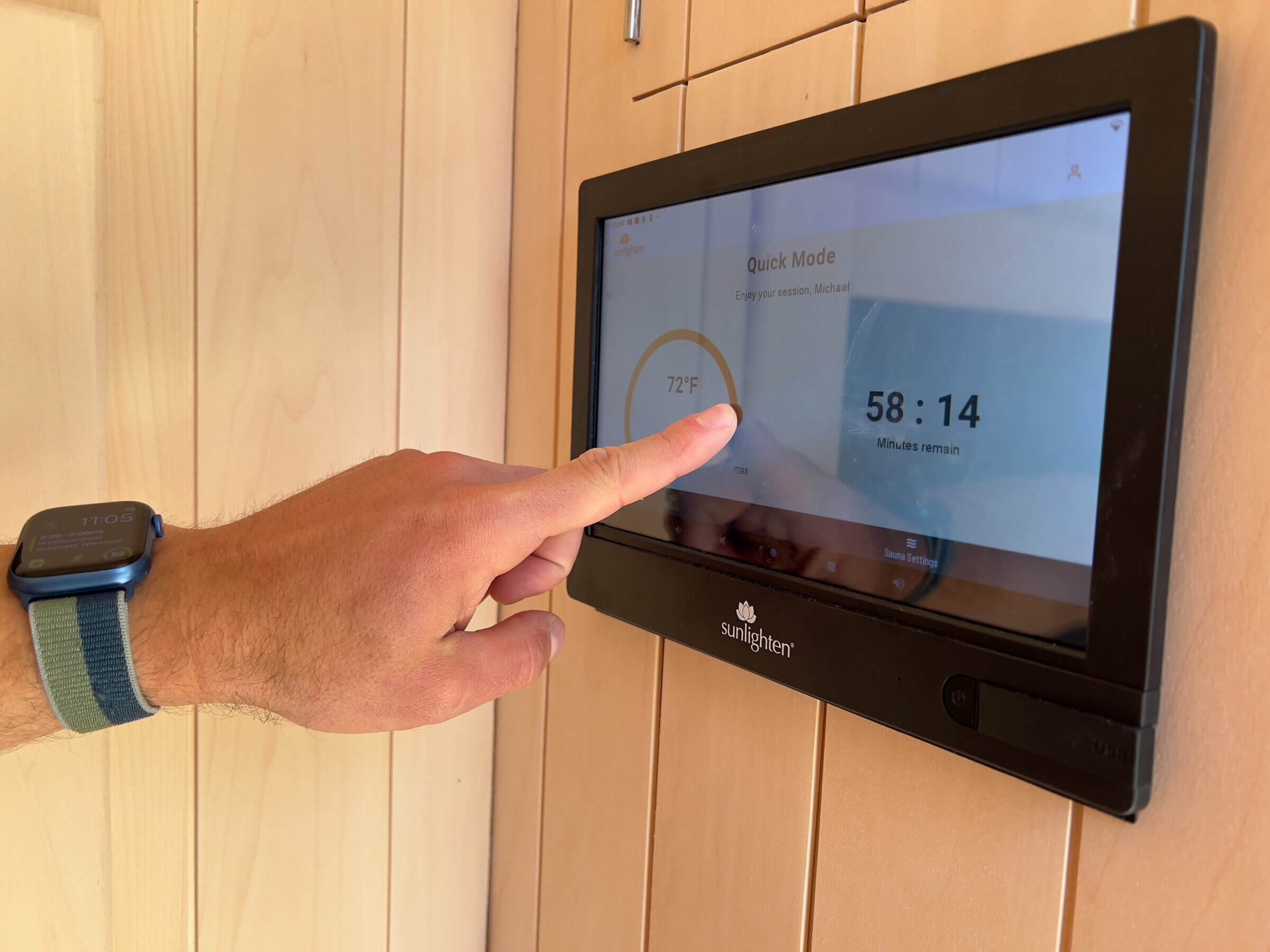
Most infrared sauna manufacturers include additional features to set their saunas apart from their competition. Some of these features are nice to have, but I wouldn’t sweat it (pun intended) if you find a lower-priced sauna that includes everything you need without them.
Stated another way: I recommend dedicating your budget to high-quality heaters and natural (non-toxic) materials instead of getting distracted by some of the optional features some saunas may offer.
Chromotherapy: The Sunlighten mPulse Smart Sauna we have in our backyard includes two ceiling-mounted LEDs and a remote control to change their color. Each color in the visible light spectrum offers additional benefits to support energy levels, the immune system, and/or your ability to withstand stress. We use chromotherapy with every sauna session, but I consider exposure to natural sunlight throughout the day more effective for optimal health.
Sound vibration therapy: Some sauns have speakers that produce stimulating vibrations to help you relax and reduce anxiety.
Touchscreen tablet: A touchscreen tablet in your sauna makes it easy to select a treatment program, watch Netflix or listen to music. The Sunlighten mPulse we have in our backyard features an Android tablet, and we use it quite a bit to catch up on our favorite homesteading channels. The downside of the tablet is that it can be a distraction, it’s a source of EMFs, and it prevents you from fully enjoying the serene environment a sauna should be.
Bluetooth or WiFi connectivity: Similar to having a touchscreen tablet, wireless connectivity can be convenient for remotely scheduling sauna sessions or for heating up the sauna, but it can also degrade your sauna experience with EMFs and potential distractions (e.g., using your phone or watching TV).
Ionization: I’m a fan of ionization technology. In fact, we leverage a whole-house bipolar ionizer in our home to improve indoor air quality. Some sauna manufacturers offer ionizers to enhance air quality, and for their antimicrobial properties.
I’d argue that air quality shouldn’t be an issue in a high-quality sauna. Plus, the heat of the infrared rays kills microbes such as bacteria and viruses. However, some manufacturers claim that ionizers can also offer skin and respiratory benefits, improve mood and reduce stress.
For example, I’ve seen claims suggesting that combining infrared light with negative ions can help improve skin conditions such as acne. The cleaner air resulting from ionization can also be beneficial if you suffer from respiratory issues.
I honestly wouldn’t spend extra money on an ionizer, but I would welcome it if the sauna I purchased happened to include one.
Grounding or earthing mat: As mentioned in my Therasage review and the “reconnecting with nature for health and happiness” episode of the Primal Shift Podcast, grounding (or earring) offers several health benefits, including reduced blood pressure, reduced inflammation, improved sleep and more.
The good news is that even if your sauna doesn’t include grounding or earthing features, you can always walk barefoot on natural surfaces to get the same benefits.
#11. Assembly and Delivery
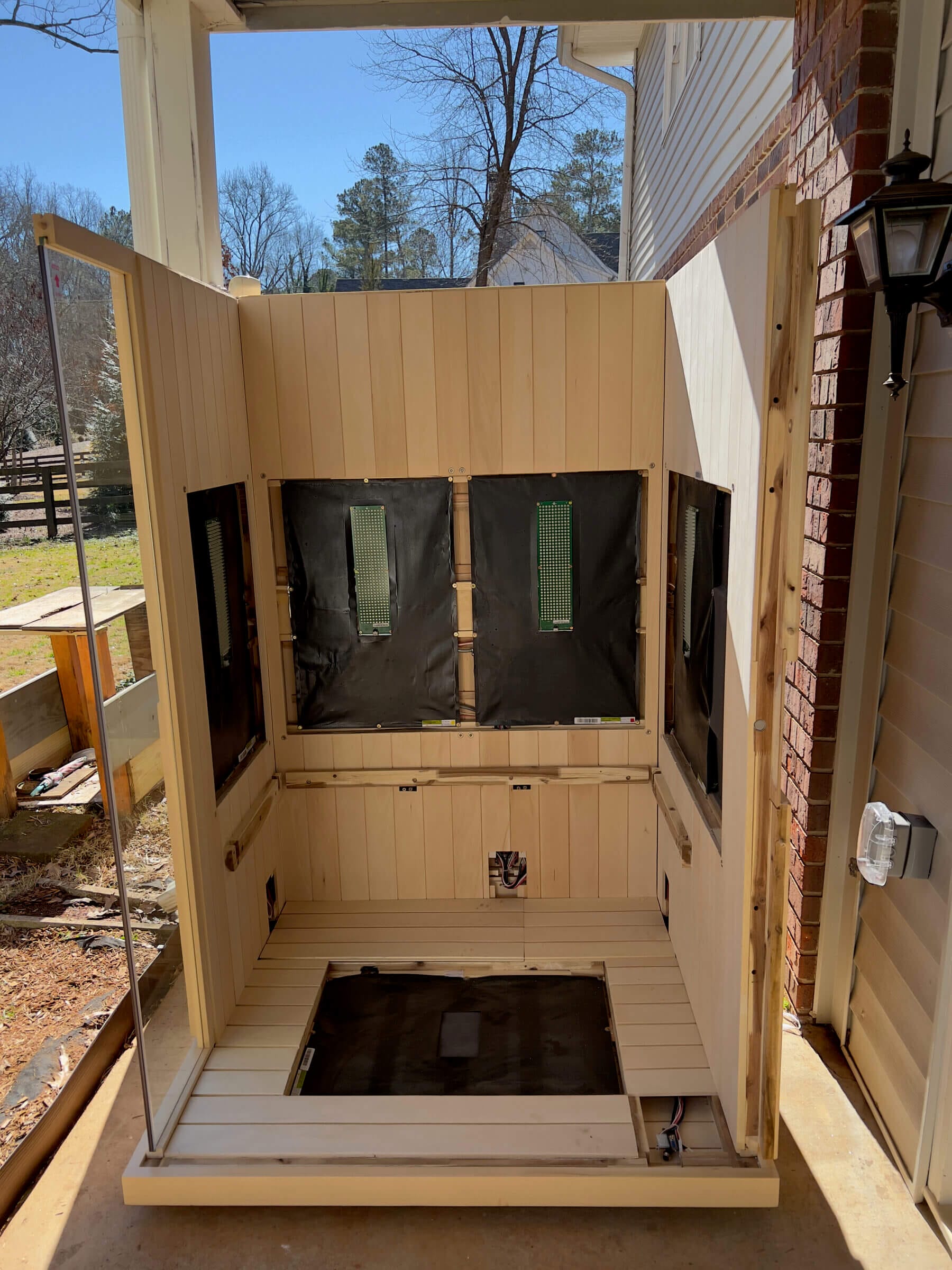
Depending on the size of the infrared sauna you choose, the type of delivery and ease of assembly (and disassembly) can be important factors to consider.
Some of the brands I’ve purchased walk-in infrared saunas from in the past offer flexible delivery options. That means the truck driver brought the individual boxes (some of which weighed several hundred pounds) down our driveway and even placed them into our garage before we unpacked them on the day we set up the sauna.
Other manufacturers offer only curbside delivery, making it your responsibility to bring the individual boxes down your driveway.
That was the case with our Redwood Outdoors Finnish sauna, as shown below; the driver dropped off a huge, 800-pound box next to our mailbox on a rainy day, and we had to scramble to get all the pieces moved into our basement.
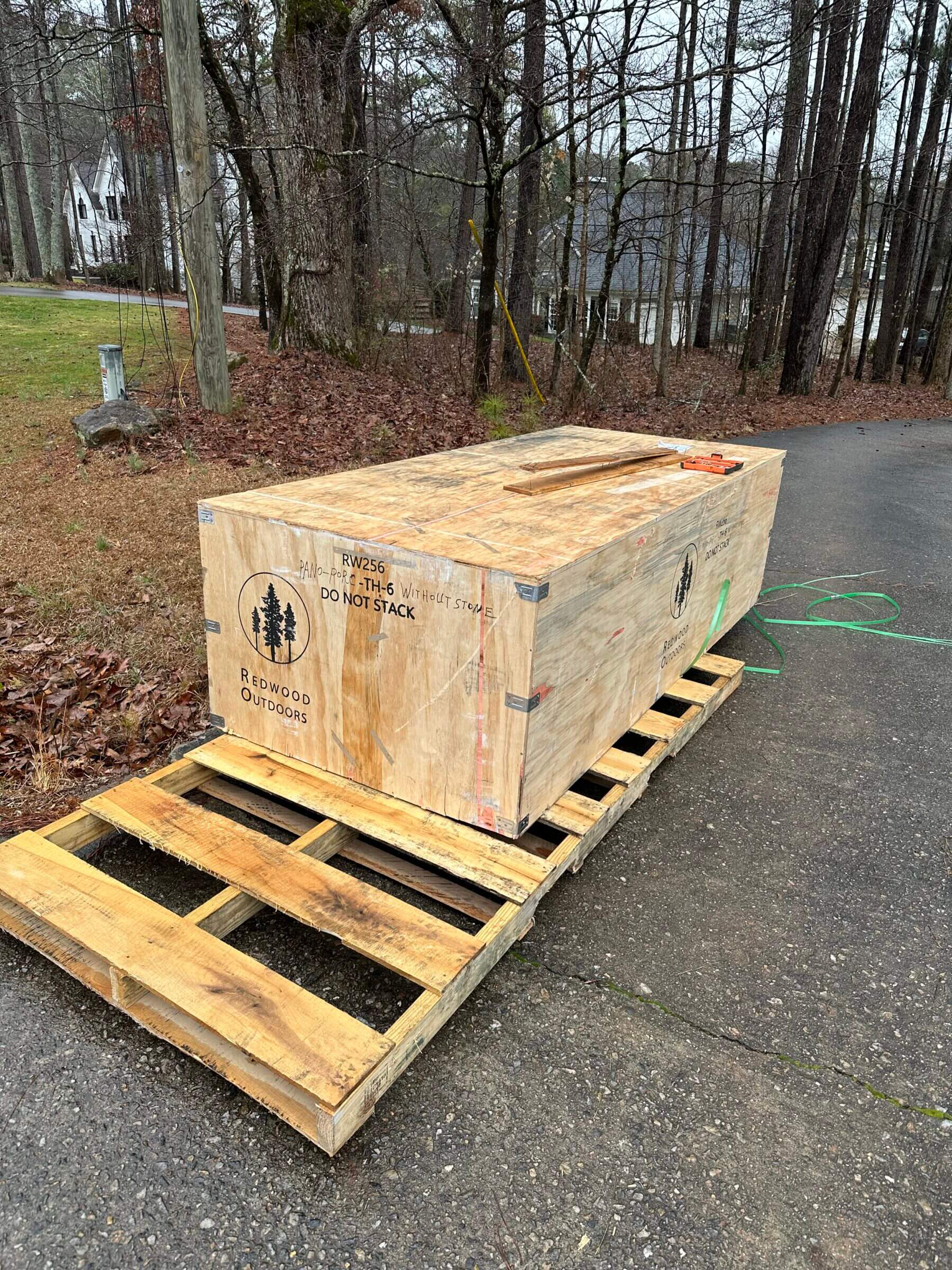
Aside from delivery, it’s also important to consider what it takes to assemble the sauna. Both Sunlighten saunas we’ve had were relatively easy to assemble by two people. The walls, roof and flooring were all preassembled; we just had to connect the pieces and align them using a rubber mallet.
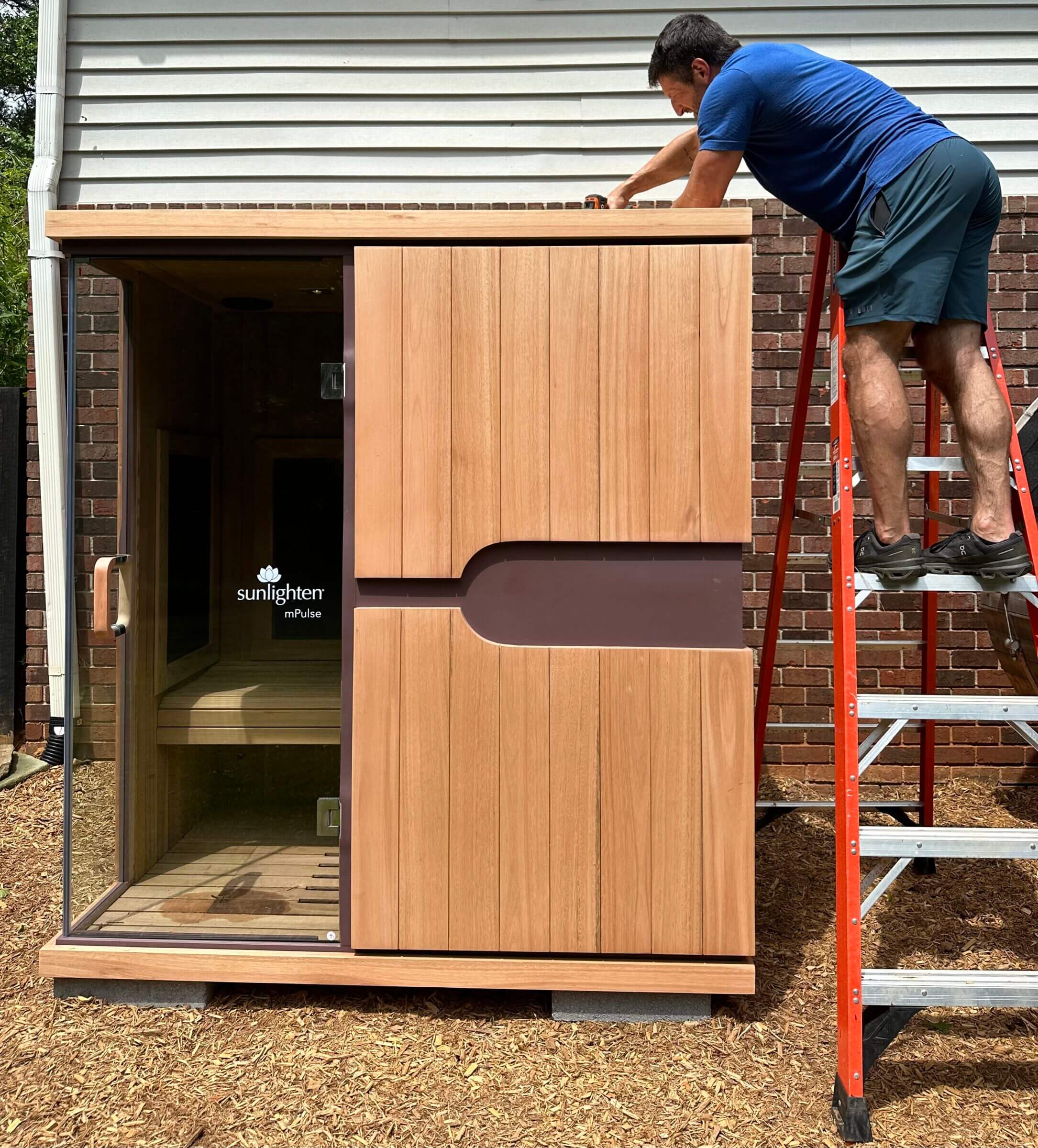
Other saunas I’ve seen require screws and various tools, making the assembly more involved and increasing the risk of damage if you ever plan on disassembling (and moving) the sauna.
Of course, make sure you have all the electrical requirements figured out (as I mentioned above) before you start assembling your sauna.
#12. Maintenance
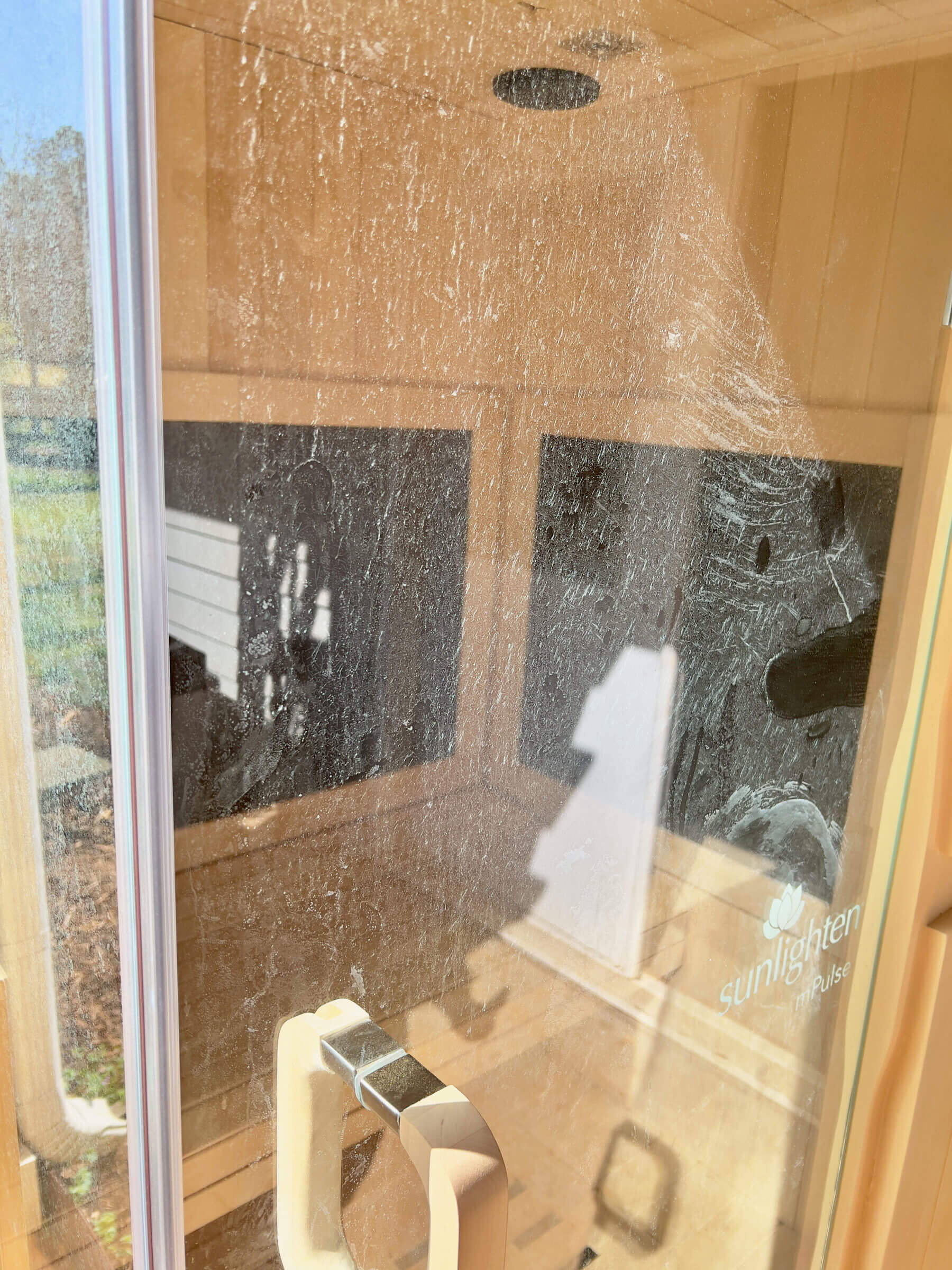
Maintaining an infrared sauna should be relatively straightforward and not include more than wiping the glass door and interior surfaces with a damp cloth and a non-toxic cleaner every so often. (We use HypoAir Total Clean.)
To further reduce your maintenance requirements and to keep the wood surfaces free of stains, I recommend using towels or seat cushions with washable covers to absorb your sweat.
If you use your sauna outdoors, I also recommend placing a door mat at the entrance (to reduce the chances of bringing debris into the sauna) and covering the sauna with an appropriate cover that limits the wood’s exposure to the elements.
The good news is that common types of household molds don’t grow in hot environments. In fact, most molds don’t grow at temperatures above 100 Fahrenheit, and temperatures above 140 kill them. Paired with the relatively low humidity levels in infrared saunas, you shouldn’t have to worry about mold, mildew or odor-forming bacteria.
However, to further reduce humidity levels after sauna bathing, I usually leave the door open for a few minutes to allow heat and moisture to escape.
#13. Safety
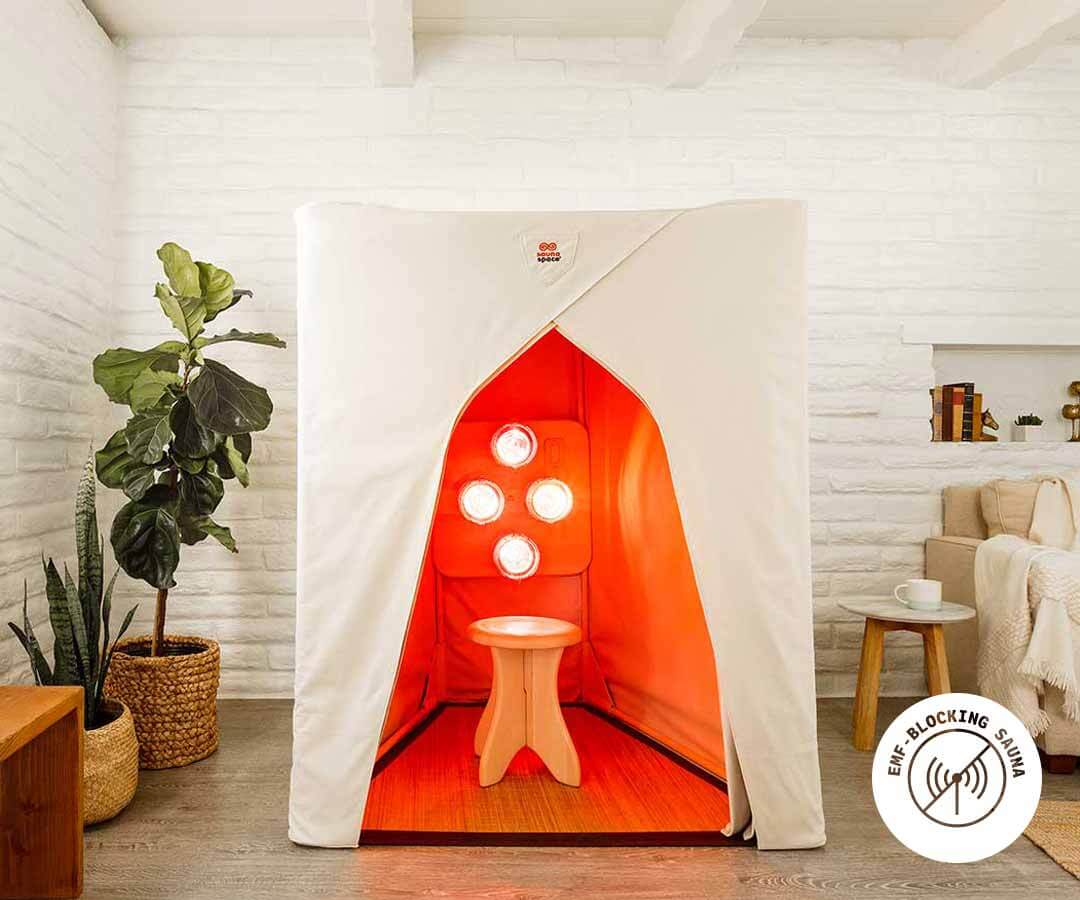
Infrared saunas are generally safe to use, but the ceramic heaters in some saunas can lead to incredibly high surface temperatures that can burn your skin. The same applies to infrared saunas that use halogen or tungsten heating bulbs, such as the SaunaSpace Faraday.
The SoloCarbon heaters built into the Sunlighten mPulse smart sauna in our backyard get hot, but not hot enough to cause serious burns — even if you lean directly against the fabric covering the LEDs.
None of the infrared saunas I’ve tested or used get hot on the outside. So if you have small kids, you shouldn’t have to worry about them touching the glass door or any other part of the exterior. That also means you don’t have to worry about potential heat damage to your floors or walls, or a potential fire hazard if you have an indoor sauna.
However, I always recommend asking the sauna manufacturer for an ETL certification to make sure all the electrical work meets all safety and performance standards.
#14. Warranty and Support
If you spend thousands of dollars on a high-end infrared sauna, you want to ensure you’re taken care of in case of an issue or if something breaks. That’s why I recommend looking for brands that offer a multi-year warranty on the most expensive parts of the sauna, such as the heaters. Clearlight offers a limited lifetime warranty on its saunas, while most others range from four to seven years.
Keep in mind the reputation of the company when thinking about this. If you buy an imported sauna off of Amazon, the “lifetime” warranty won’t mean much if the company goes out of business.
Frequently Asked Questions
The answer to this question depends on your budget, available space, and the health benefits you’re seeking. Based on my experience with various brands and sauna models, I recommend the Sunlighten mPulse smart sauna as the best full-size walk-in cabin, the Therasage 360 as the best personal sauna, and the SaunaSpace Faraday as the best EMF-blocking sauna.
I recommend the Therasage 360 personal sauna because it offers all of the benefits of larger saunas, is packed with additional features such as red light therapy and a grounding mat, and costs less than $1,200.
I think full-spectrum infrared saunas are worth it, considering the additional health benefits light in the near-infrared and mid-infrared spectrum offers, but if your budget is tight, purchasing an infrared sauna that offers only far-infrared heaters is better than not having a sauna at all.
If you care for your infrared sauna, the wood structure can last decades. The components that are likely to break first are the electronics and the heaters. Companies such as Sunlighten offer a seven-year warranty on heaters and three years on the controls (for home use), so I’d expect those components to last for about a decade, depending on how often you use them.
Final Thoughts on Buying an Infrared Sauna
The market for infrared saunas has exploded in recent years, increasing the likelihood of finding a sauna that fits your budget while offering the health benefits you’re after.
I’ve been testing and using several different types of infrared saunas over the past few years, including full-size sauna cabins, personal saunas and even sauna blankets.
I hope this article has helped you make a purchasing decision based on your budget and requirements, while avoiding costly mistakes.
You can learn more about some of the infrared saunas we own and/or have tested in the following articles:
- Sunlighten mPulse review
- Sunlighten Solo review
- Therasage 360 review
- Sun Home Infrared Blanket review.
If you have any questions or concerns, please leave a comment below!

Michael Kummer is a healthy living enthusiast and CrossFit athlete whose goal is to help people achieve optimal health by bridging the gap between ancestral living and the demands of modern society.
Medical Disclaimer
The information shared on this blog is for educational purposes only, is not a substitute for the advice of medical doctors or registered dieticians (which we are not) and should not be used to prevent, diagnose, or treat any condition. Consult with a physician before starting a fitness regimen, adding supplements to your diet, or making other changes that may affect your medications, treatment plan or overall health. MichaelKummer.com and its owner MK Media Group, LLC are not liable for how you use and implement the information shared here, which is based on the opinions of the authors formed after engaging in personal use and research. We recommend products, services, or programs and are sometimes compensated for doing so as affiliates. Please read our Terms and Conditions for further information, including our privacy policy.
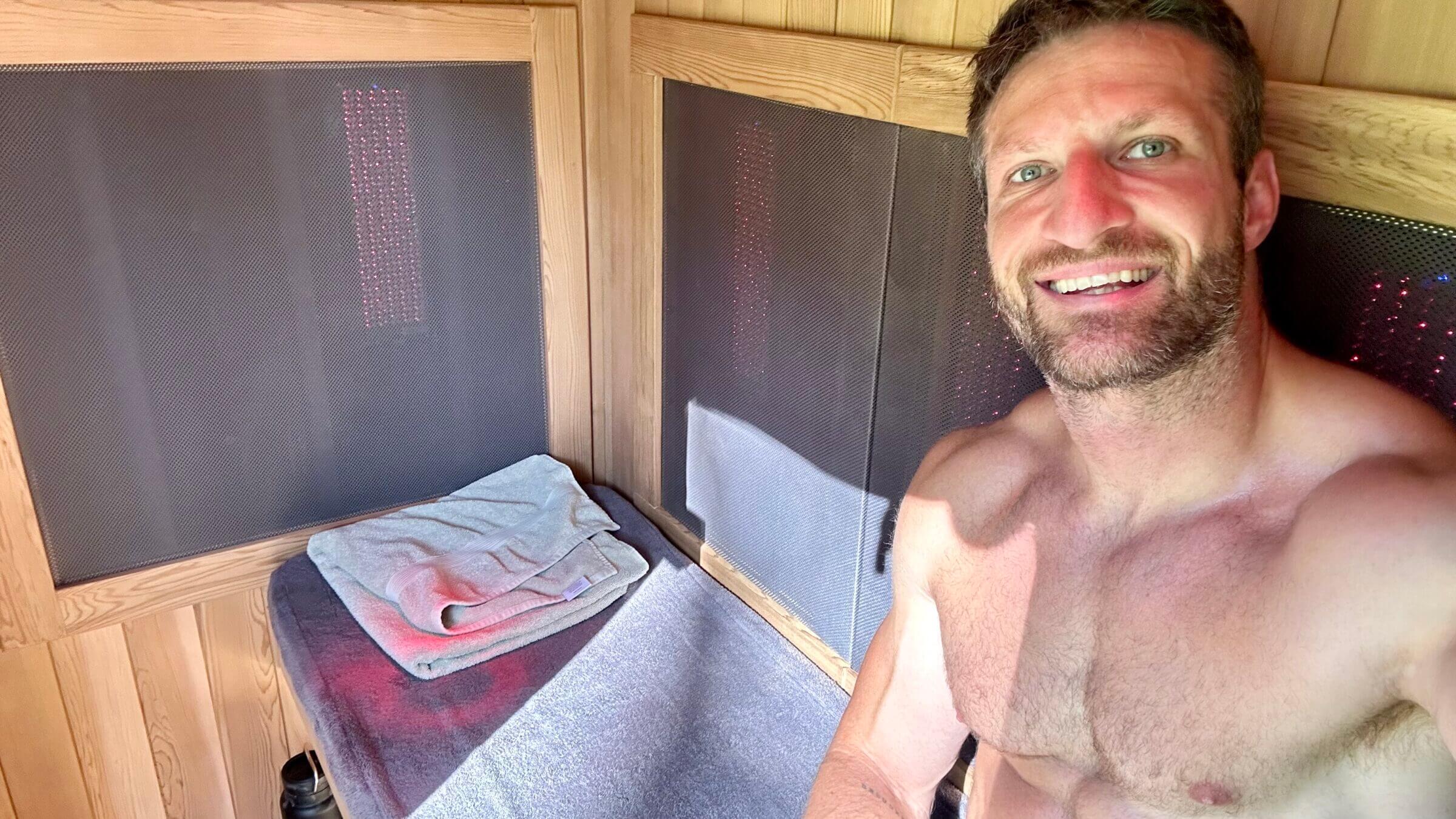

I would like the discount code for the TS360 portable sauna. I would like to purchase it ASAP.
Ken Cook
Hey Kenneth,
If you want to give the Thera360 PLUS a try, use coupon code MKUMMER to get 10% off your purchase.
PS: I removed your email address and phone number from your public comment.
Cheers,
Michael
Thank you for this informative article on Infrared saunas.
You’re most welcome!